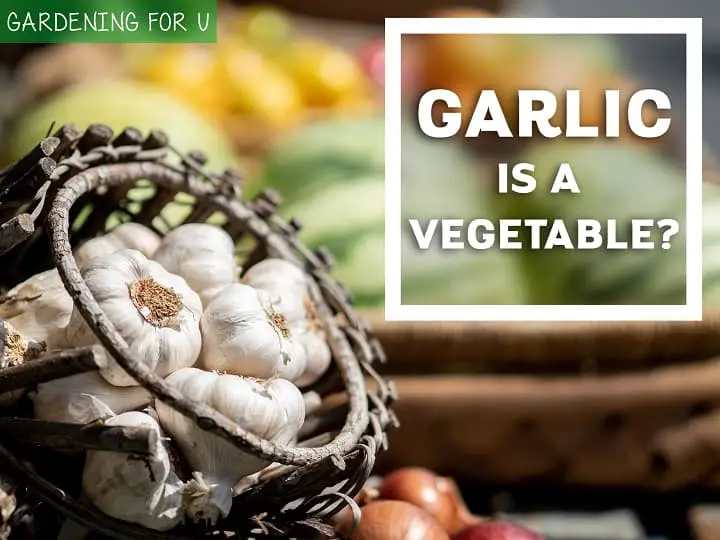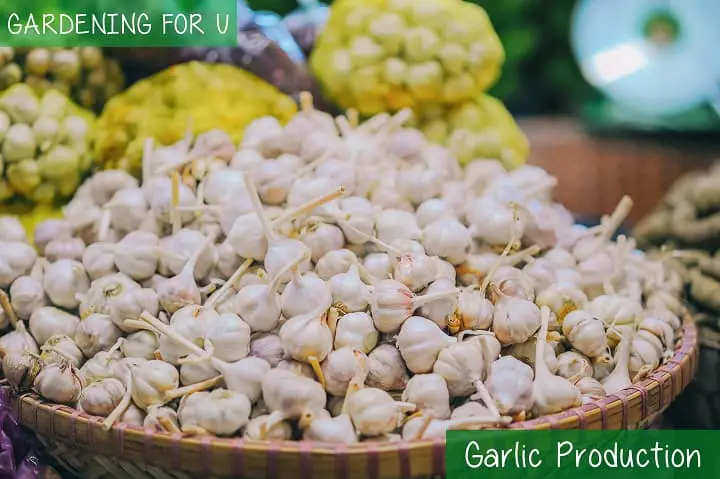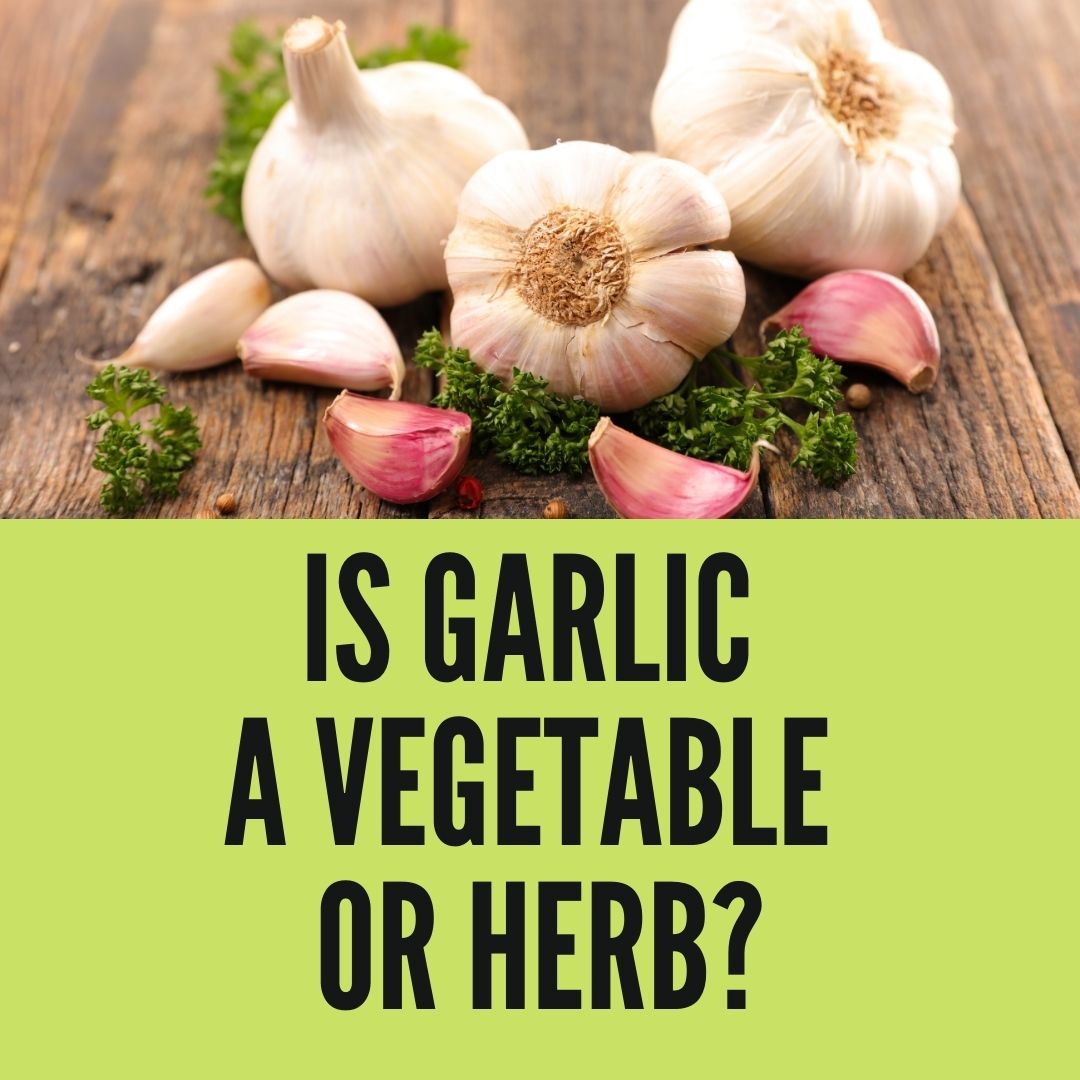Garlic is a mighty ingredient in the kingdom of food. Without it, your fried rice or your spicy noodles will taste bland, most importantly garlic bread will not exist.
So it’s obvious if you wonder about it and questions pop up in your mind like is garlic a vegetable? Or just simply what is garlic?

Is Garlic a vegetable or spice?
Well, we have seen at our home that we don’t cook garlic like a vegetable so this question may confuse you, ‘Is Garlic a vegetable or a spice?’
Garlic is both vegetable and spice. It is a vegetable botanically. And on the other hand, it increases the smell and taste of the food. So in that sense, it is a spice.
What is spice?
For clearing out your confusion let’s look at the definition of spices. Spices are things that are added to the food to increase the flavor or aroma.
If we think in this way then garlic can be considered a spice as garlic is often added in small amounts in food to heighten the smell or taste.
But botanically garlic is a vegetable. Because it has all attributes of a plant, it is a bulb and it is able to reproduce as a plant. The cousins of garlic are onions, chutes, or shallows which are also bulbs.
So even in the culinary classification of garlic are considered as spices, it is actually a vegetable botanically.
What is garlic?
Allium Sativa or as we commonly know garlic is actually a flowering plant that grows from a bulb. It has a long and straight flowering trunk that shoots up to three feet. The foliage of garlic is uniform and wide.

The bulb of garlic is the main thing and it has a certain smell attached to it. The bulb contains the cloves of the garlic and the cloves have a white thin layer around them.
The cloves of garlic reside inside the bulb in a beautiful asymmetric position and often one bulb contains 10-30 cloves.
Garlic plants have hermaphrodite flowers and the color of the flowers varies from pink to purple. One interesting fact about garlic is that this can even endure the cold frost of Alaska.
Classification of Garlic
It is not an easy task to find the origin and major types of garlic as it has different cultivars. But from the aspects of genetics and morphology, it can most resemble with a wild species which can be found mostly in southwestern Asia and it is Allium longicuspis.
You may be surprised to know that even garlic has so many different species. There are mainly two kinds of subspecies of garlic, hundreds of different cultivars and ten varieties. The subspecies are-
- Ophioscorodon which is known for its hard necked variety. These subspecies have different types of variety of garlic thus sometimes it is considered another species.
- Sativum is the most commonly known subspecies of garlic. The Ophioscorodon garlics have a hard neck but in contrast Sativum has soft necked garlics.
Production of Garlic
As there are hundreds of varieties of garlic different countries produce many different kinds of garlic.
In Britain, some famous garlic varieties are Allium ursinum, Allium oleraceum which are known as “wild garlic” or “crow garlic”.
Similarly, North America has its own kind of garlic which are Allium vineale, Allium canadense, etc.

Where is Garlic produces the most?
The most diverse varieties of garlic come from Asia which has made Asia the diverse epicenter of Garlic.
Currently, China holds the position for producing the largest amount of garlic and it produces 78% of the world production of garlic alone.
Storage of Garlic
How to store Garlic?
You should keep your garlic in a dry and warm place where the temperature will be 60-65 degrees Fahrenheit.
If you keep it in a wet place then it will start germinating and will start shooting buds.
One tip you can follow if you want to keep your garlic longer, do not to detach the top from it, it will be stored longer.

Garlic is traditionally kept braided and it is called grappes. The cloves which are peeled can be kept in the refrigerator, vinegar, or wine.
Garlic is often kept in oil to produce garlic-flavored oil but it should be done safely.
Because it can rot in the oil and then it will start producing certain types of bacteria like Clostridium botulinum.
Molds can appear in garlic if it is attacked by Penicillium and that can happen if garlic is kept in a damp place.
How to store garlic commercially?
Commercially, Garlic is kept at thirty two degrees Fahrenheit and it is kept in a place that has low humidity.
Also, people dry garlic at a low temperature to sell, in that case, this garlic needs to be re-hydrated.
Nutrition of Garlics
With the small amount of garlic like in two to three cloves there are no significant nutritional values whatsoever.
But in hundred-gram servings, there are a lot of vitamins, proteins, and minerals included in garlic.
Garlic is a source of vitamin B and it has Thiamine (B1), Riboflavin (B2), Niacin (B3), Pantothenic acid (B5), Vitamin B6, Folate (B9), and Vitamin C in it.
It has a notable amount of minerals like Calcium, Iron, Magnesium, Manganese, Phosphorus, Potassium, Sodium, and Zinc. Also, it contains water and carbohydrates.

Uses of garlic
Garlic is not only used in foods. It is used in Medical sectors, diet even in spiritual things. Let’s just look at some of its usages-
- Garlic is known for boosting immunity. That’s why garlics are used to heal common cold or sore throats.
- Garlics can help to decrease the high blood pressure.
- The most important thing is garlic is used in almost every kind of food and thus it increases the nutritional value of foods.
- Garlic can be helpful to combat heart diseases as it helps to improve the cholesterol levels.
- Garlics can be helpful to help you sexually as it has a compound named allicin, which shoots up the blood flow to the sexual organs.
Which part of Garlic do we eat?
We consume cloves of Garlic. We can also eat the leaves and the flowers of the Garlic.
There are usually 10-20 cloves of Garlic. Although, the single clove type Garlic has only one clove as its name suggests.
We can eat Garlic both raw or cooked. And it often is used as a medicinal ingredient.
Is it safe to eat raw Garlic?
Yes, Garlic is safe to eat both raw and cooked for most people.
But if you have allergy or asthma you might have issues with raw Garlic.
If you eat raw Garlic you will have a bad odor in your mouth. And if you eat too much of it, you might even have diarrhea
What happens if you eat Garlic everyday?
Eating Garlic every day will give you some great benefits.
- It will lower your cholesterol level.
- It will help you to maintain your blood sugar to normal.
- It decreases the risk of prostate cancer.
Can Garlic help sexually?
Garlic can help you improve in sexual intercourse.
Allicin creates more blood flow in your sexual organs. Therefore, eating Garlic every day will definitely help you there.
How many Garlic can I eat a day?
Eating Garlic every day is beneficial for your health. But do not eat too much.
Because, like everything else, excessive eating of Garlic is not healthy in any way.
If you are to eat Garlic daily, try to eat somewhat between 5-15 mg per day. Any more than that on a regular basis might give you some side effects.
Does Garlic increase immunity?
Yes, Garlic increases your immunity. It helps with common colds and sore throats.
Eating Garlic on a regular basis will definitely improve your immune system.
Do you know about the Ikebana flower arrangement? Read this article on what is Ikebana to know more about it.
Where to buy Garlic online?

Buy Garlic on Amazon 
Buy Garlic Tablet on Amazon
Thanks to: wiki
